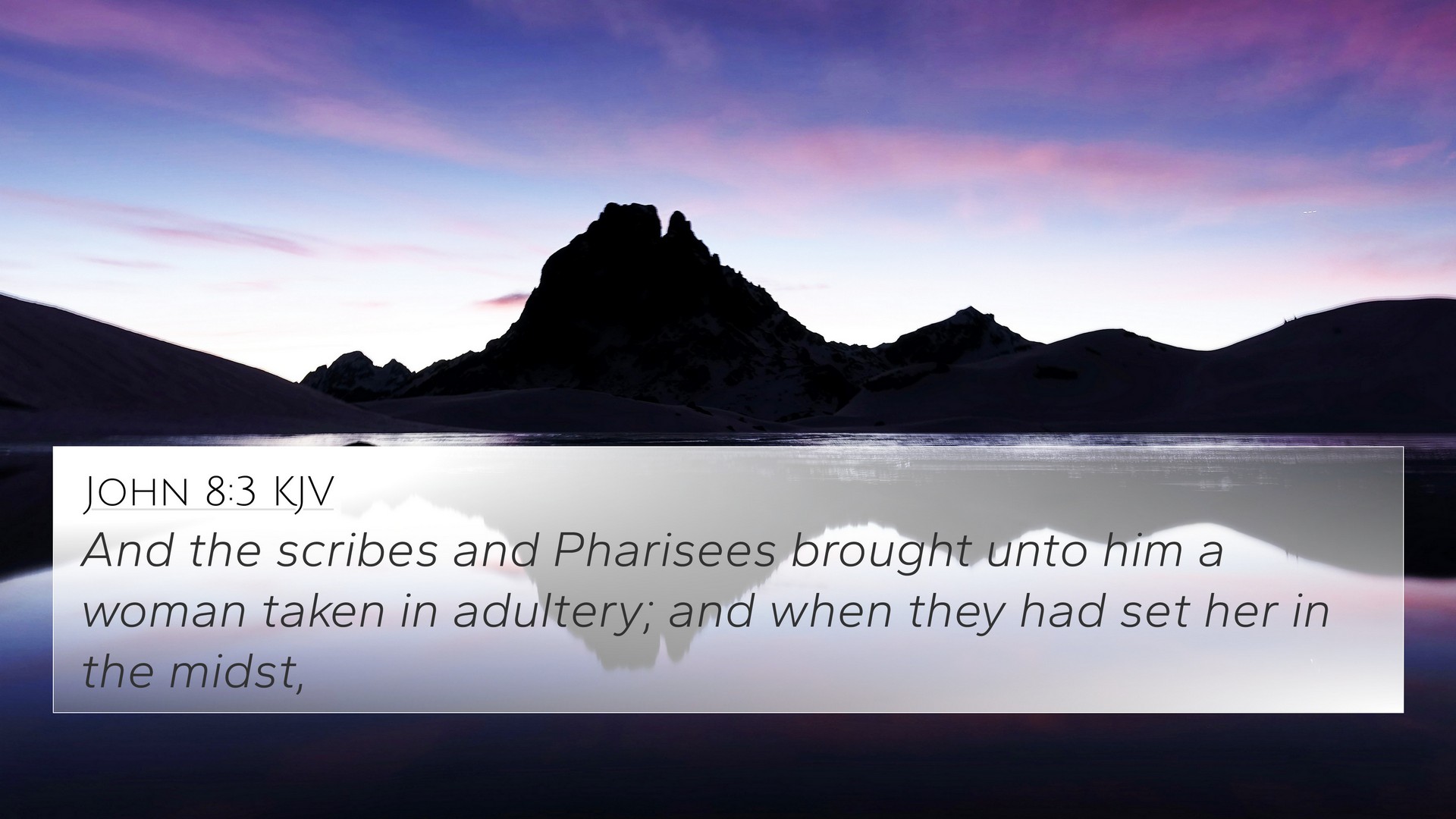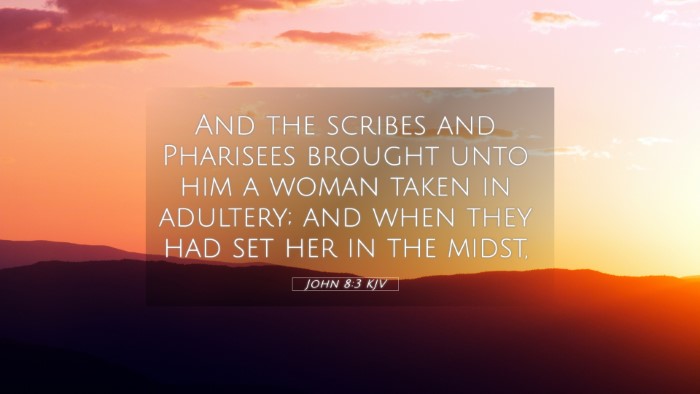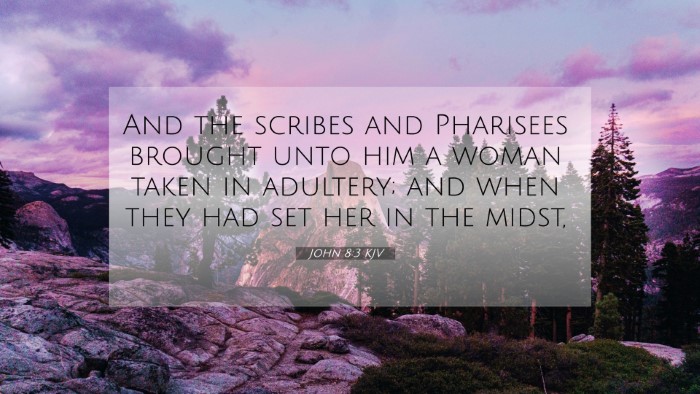Understanding John 8:3
John 8:3 reads: “And the scribes and Pharisees brought unto him a woman taken in adultery; and when they had set her in the midst,”. This passage initiates a significant moment in Jesus’ ministry, showcasing both His moral authority and the tension between the law and grace.
Contextual Overview
This event occurs in the temple during the Feast of Tabernacles, a time when many pilgrims were in Jerusalem. The religious leaders, particularly the scribes and Pharisees, aimed to entrap Jesus. By presenting the woman caught in adultery, they sought to challenge His adherence to Mosaic law while hoping to provoke a reaction that would discredit Him.
Key Themes in John 8:3
- Judgment and Mercy: The Pharisees focus on the law while Jesus embodies mercy.
- Authority of the Law: This passage emphasizes the gravity of the Law of Moses.
- Hypocrisy: The actions of the Pharisees reveal their lack of compassion.
- Grace: Jesus’ response offers profound insights into the concept of forgiveness.
Bible Verse Cross-References
John 8:3 has multiple connections to other scripture passages that enhance its understanding:
- Deuteronomy 22:22: The laws regarding adultery and its consequences.
- John 8:7: Jesus’ declaration, “He that is without sin among you, let him first cast a stone at her.”
- Matthew 7:1: “Judge not, that ye be not judged.” – highlighting themes of judgment.
- Romans 3:23: “For all have sinned, and come short of the glory of God.” - a reminder of shared human fallibility.
- Galatians 6:1: Encouragement to restore those caught in sin with a spirit of gentleness.
- Psalms 51:1-2: David's plea for mercy, reflecting the human need for divine forgiveness.
- Luke 19:10: “For the Son of man is come to seek and to save that which was lost.” – demonstrating Jesus’ mission of salvation.
Insights from Public Domain Commentaries
Matthew Henry's Commentary
Matthew Henry points out the cunning nature of the scribes and Pharisees, emphasizing their desire to trap Jesus. He underscores that the woman's sin, although serious, reflects a universal condition, drawing attention to human corruption and the need for a savior.
Albert Barnes' Notes
Albert Barnes elaborates on the legal implications of the situation, linking this event to the strict legalism of the religious leaders. He highlights that their approach was to apply the law without understanding mercy's place in God’s economy.
Adam Clarke's Commentary
Adam Clarke provides a detailed analysis of the cultural context, explaining that the act of bringing the woman before Jesus was not only an attempt to discredit Him but also a demonstration of their moral superiority. He notes the implications of Jesus’ response as a profound lesson on redemption and compassion.
Thematic Connections in Scripture
This passage provides a rich ground for inter-Biblical dialogue, fitting into broader themes of judgment, grace, and the human condition. Here are some thematic connections:
- Forgiveness and Restoration: As seen in the story of the Prodigal Son (Luke 15:11-32).
- Covenant and Law: The balance of mercy and justice throughout the Old Testament.
- Compassion for Sinners: Parallel to Jesus’ interactions with tax collectors and sinners (Matthew 9:10-13).
Tools for Bible Cross-Referencing
Interpreting John 8:3 through cross-references assists in understanding its implications:
- Utilizing a Bible concordance to locate related verses and themes.
- A Bible cross-reference guide provides context and clarity on scriptural relationships.
- Engaging in cross-reference Bible study for deeper insights into the text.
Conclusion
In summary, John 8:3 offers significant insights into the character of Christ juxtaposed with the legalistic tendencies of the religious leaders. As we explore this passage further with comprehensive Bible cross-references, we can appreciate the depths of grace and mercy that Jesus illustrates, alongside the serious nature of sin addressed in the law.


